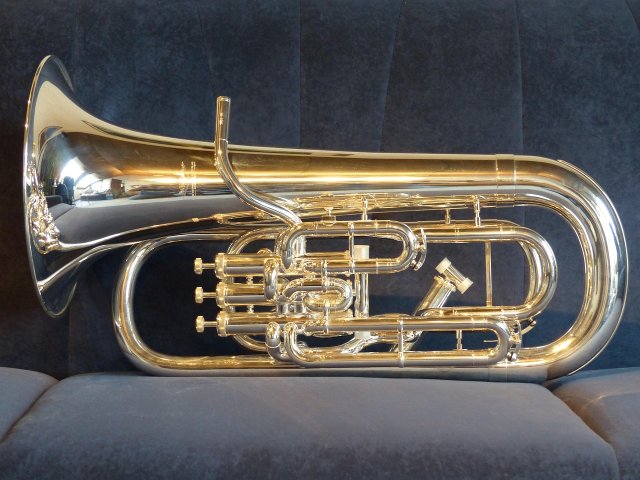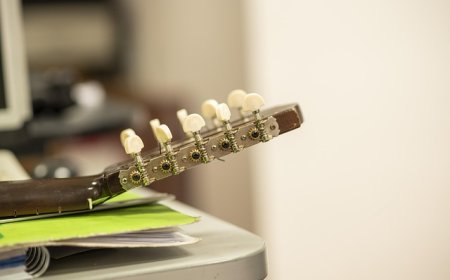Euphonium Facts for Students | Learn How the Euphonium Works & Its History
Discover how the euphonium works, its parts, history, famous players, and fun facts. A helpful guide for music students exploring low brass instruments.

🎵 All About the Euphonium
🥇 Introduction
The euphonium is a warm, mellow brass instrument that looks like a small tuba and sounds like a rich baritone voice. It often plays beautiful melodies and smooth harmonies in concert bands, brass bands, and military bands. Although it doesn’t get as much attention as the trumpet or trombone, the euphonium has a singing tone and is loved by those who discover it. Its name comes from a Greek word meaning "pleasant sound"—and it definitely lives up to that name!
🎺 What Is a Euphonium?
A euphonium is a low brass instrument that is played by buzzing the lips into a large mouthpiece and pressing valves to change notes. It looks similar to a tuba but is smaller and higher in pitch. Most euphoniums are pitched in B♭ and have either three or four valves.
The euphonium is a conical bore instrument, which means the tubing gradually gets wider from the mouthpiece to the bell. This design gives it a warm, smooth sound, unlike the trombone’s more direct and brassy tone. Euphoniums are common in wind bands and British-style brass bands and are sometimes called the tenor tuba.
🧩 Parts of the Euphonium
The euphonium has several important parts that work together to create its beautiful tone. It starts with the mouthpiece, where the player buzzes their lips. Euphonium mouthpieces are deep and wide, helping produce low, round sounds.
From the mouthpiece, air flows into the leadpipe and then through a series of valves. Most euphoniums have three piston valves, but many professional models include a fourth valve, which helps extend the range and improve tuning. These valves redirect the air through different lengths of tubing, changing the pitch.
The sound then travels through the gradually widening tubing and exits from the large bell. Euphoniums may have bells that face forward (for projection in marching bands) or upward (common in concert settings). Some euphoniums also include tuning slides and water keys to fine-tune pitch and remove moisture.
⚙️ How Does the Euphonium Work?
The euphonium works by using lip vibrations to create sound that is shaped by the instrument’s tubing. When the player buzzes their lips into the mouthpiece, it produces vibrations that travel through the instrument. Pressing the valves sends the air through longer or shorter tubing, which changes the pitch.
The euphonium’s conical tubing gives it a smooth, mellow tone that blends easily with other instruments. It is known for its lyrical, voice-like quality, which makes it perfect for solos and expressive melodies.
The fourth valve, when present, acts like an extra low-range valve and also helps correct the pitch of certain notes. Euphonium players use their embouchure, breath control, and valve combinations to play both low bass notes and sweet high melodies.
📜 History of the Euphonium
The euphonium was developed in the mid-1800s, during a time when many brass instruments were being improved with the invention of valves. Its closest relatives include the ophicleide and the serpent, older low brass instruments that were difficult to play and limited in range.
The modern euphonium is believed to have been invented in 1843 by Ferdinand Sommer, a German instrument maker. Around the same time, similar instruments called tenor tubas and baritone horns were also developed.
The euphonium quickly became popular in military bands, where its warm sound added depth to the ensemble. It was especially embraced in British brass bands, where it plays a leading melodic role. Today, the euphonium is a respected solo instrument and a key part of wind ensembles and brass bands worldwide.
🎷 Famous Euphonium Players
While the euphonium isn’t as famous as the trumpet or violin, it has its own stars! Here are a few of the most respected euphonium players:
- Steven Mead – A British euphonium soloist known around the world for his recordings and performances
- David Childs – A Welsh euphonium virtuoso and professor who often plays with orchestras and brass bands
- Brian Bowman – An American euphonium pioneer who helped raise the instrument’s reputation in the U.S.
- Demondrae Thurman – A U.S.-based soloist and teacher who brings energy and soul to every performance
- Toru Miura – A leading euphonium player from Japan known for his musical expression and teaching
These players have shown that the euphonium can be a beautiful, expressive solo instrument, not just a background voice.
🎶 Learning to Play the Euphonium
Learning the euphonium is a wonderful experience, especially for students who enjoy rich, mellow tones and playing in ensembles. Beginners usually start on a three-valve euphonium, which is smaller and easier to manage. As students progress, they may upgrade to a four-valve compensating euphonium, which offers better tuning and range.
The first step in learning is to develop a good buzz on the mouthpiece. From there, students learn how to use valve combinations to change pitch, how to read bass clef (or treble clef, depending on the band tradition), and how to play long tones and scales for tone control and breath support.
Euphonium players often play the melody or inner harmonies in band music. They’re key members of concert bands, brass ensembles, and low brass sections. With daily practice and the right instruction, euphonium students can develop a warm, expressive tone and become strong musicians in any ensemble.
😄 Fun Facts About Euphoniums
Here are some fun and fascinating facts about the euphonium:
- The name “euphonium” comes from Greek and means “beautiful sound.”
- The euphonium is often confused with the baritone horn, but the euphonium has wider tubing and a warmer tone.
- Euphoniums can have compensating systems, which help with tuning low notes.
- Some euphoniums read bass clef, while others (especially in British bands) read treble clef.
- The euphonium has been used in film scores, including in Star Wars and The Incredibles.
- Euphonium players sometimes perform solos in international competitions, just like violinists or pianists.
👧 Kid-Friendly Summary
The euphonium is a shiny brass instrument that looks like a small tuba. It makes a warm, smooth sound when you buzz your lips into a big mouthpiece and press valves to change notes. The euphonium plays pretty melodies in bands and has a calm, rich voice. It’s easy to learn and fun to play—especially if you like being the heart of the music without being the loudest!
📚 Vocabulary Words
Euphonium – A low brass instrument with a warm, mellow tone
Conical bore – Tubing that gradually gets wider, creating a smoother sound
Valve – A button that changes the pitch by redirecting air
Compensating system – A design that helps improve tuning on low notes
Bass clef – A way of writing music for low-pitched instruments
Treble clef – A way of writing music usually used for higher instruments
Mouthpiece – The part you buzz your lips into
Bell – The flared end where the sound comes out
❓ Interactive Quiz
1. What does the name “euphonium” mean?
A. Loud instrument
B. Beautiful sound
C. Small tuba
D. Buzzing tube
2. How is the euphonium different from a baritone horn?
A. It’s made of wood
B. It has a brighter sound
C. It has wider tubing and a warmer tone
D. It has strings
3. How many valves does a professional euphonium usually have?
A. 2
B. 3
C. 4
D. 6
4. What kind of bore does the euphonium have?
A. Cylindrical
B. Conical
C. Square
D. Flat
5. In what kind of bands is the euphonium most commonly used?
A. Rock bands
B. Jazz combos
C. Brass bands and wind ensembles
D. String quartets




















































